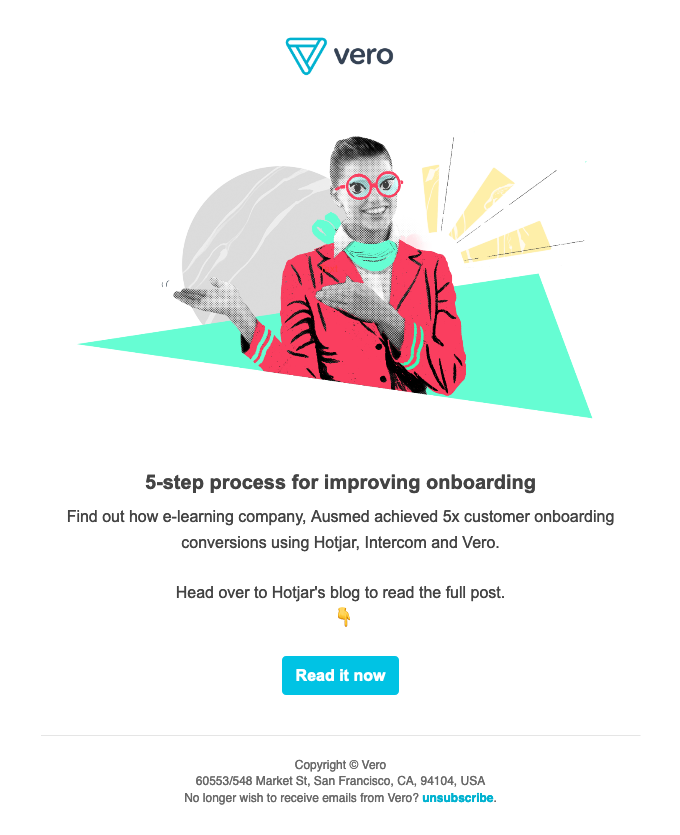Do you get joy when compiling your monthly newsletter? You maybe have a mild panic attack trying to stuff all info from various departments in a logical order. Or you’re hit by writer’s block because you have no idea how you will be filling all those empty content slots. And once it’s written, you then have to pass through various internal approvals and checks because it feels like everyone has last minute changes on their mind. There has to be another way.
Let's be honest – your monthly newsletter has become that friend who shows up at your house and just won't stop talking. About everything. All at once. And while you love them dearly, it's time for an intervention.
Let's be honest – your monthly newsletter has become that friend who shows up at your house and just won't stop talking. About everything. All at once. And while you love them dearly, it's time for an intervention.
Why your monthly newsletter isn't working (even though you think it is)
Every month, you carefully craft this beautiful compilation of everything that's happened: product updates that made your dev team proud, customer stories that made your sales team cry (happy tears), and that incredible industry analysis your CEO spent three days perfecting.And then... most of your subscribers skim it for 7 seconds between Zoom calls.
The problem isn't your content – it's that you're serving a seven-course meal to people who are grabbing lunch between meetings. Let's fix that.
The transition plan: baby steps to better engagement
Step 1: the content audit
Start by digging through your last three to twelve newsletters. You'll discover content patterns you didn't even know existed:- Product updates and features that deserve their own spotlight
- Customer success stories reduced to single quotes or buried under other updates
- Industry insights and trends that got lost in the noise
- Company news and culture
- Educational content and tips
- Event announcements
Step 2: Content hierarchy mapping
Not all content is created equally. Some content needs immediate attention (like product updates), while other content has a longer shelf life (like strategy pieces). Create a hierarchy:Immediate impact content:
- Feature releases and updates
- Time-sensitive announcements, like maintenance windows, impact on traffic, …
- Quick wins and tips
- Event invitations
- Customer success stories
- Industry insights
- Best practices
- Thought leadership pieces
- Team spotlights
- Behind-the-scenes looks
- User-generated content
- Community achievements
Step 3: The transition strategy
Completely sure about wanting to overhaul your communication and frequency, or do you first want to test it out?💡The soft launch
Start by sending a "pilot program" to a segment of your most engaged readers. Be transparent:"Hey [Name],
We've noticed you're one of our most engaged readers (thank you!), and we'd love your input on something new we're trying. Instead of our usual monthly digest, we're going to send you more focused updates over the next few weeks.
The goal? Making sure you never miss the stuff that matters most to you.
We'd love your feedback on this experiment. Just hit reply and let us know what you think."
Optionally, add a form to make it easy for your recipients to provide feedback.
Making the switch without giving your subscribers a heart attack
Once you’re sure about changing up your sending strategy, you need to think about your transition. Something like this:Step 1: The heads up
Send an email announcing the change: "We're breaking up... our newsletter. Here's why you'll love it."Step 2: Measuring their interests
Create a simple preference center where subscribers can change their interests (We built interests in Flexmail to make this quick, transparent and easy):- Product updates only
- Everything (for those newsletter die-hards)
- Industry insights
- Customer stories
- Tips and tutorials
Step 3: The transition period
Start with bi-weekly emails for a month, then ease into your new frequency. It's like introducing your cat to a new food – slow and steady wins the race.Content strategy 2.0: making each email count
The new rules:
- One Main Message: Each email should have one clear purpose. If you catch yourself writing "And also..." – stop right there.
- The 30-Second Rule: If it takes longer than 30 seconds to read, it needs its own landing page.
- The Curiosity Gap: Use your email to tease the value, but put the full content on your blog or knowledge base (and those intros shouldn’t be the same).
Measuring success (without losing your mind)
Track these metrics separately for each content type and compare them to your old campaigns:- Open rates (Do they care?)
- Click-through rates (Did they really care?)
- Unsubscribe rates per content type (What made them stop caring?)
Real talk: what to expect
Week 1-2: Some confusion, maybe a few unsubscribes (let them go, it's not you, it's them).Week 3-4: Starting to see patterns in engagement.
Month 2: Clear data on what your audience actually wants.
Month 3: You'll wonder why you ever thought cramming everything into one monthly email was a good idea.
The secret sauce: adaptive content
As you gather data, you'll probably start seeing natural segments emerge, like these for example:- The Feature Fanatics (always open product updates)
- The Industry Insiders (love trend analysis)
- The Success Story Seekers (open every case study)
The secret sauce: content depth layering
Maybe you feel that splitting up your content for specific topics is too restrictive or time-consuming for you. Instead of trying to make every email perfect for everyone, you could also try a different approach according to commitment and investment from your audience. If you’d like to try that, you can create content layers:Layer 1: The quick hit
Perfect for busy people and skimmers:- Bold headlines
- Bullet points
- Clear call-to-action
- Estimated reading time: 30 seconds
>
Layer 2: The strategic read
For those who want more context:- Executive summary
- Key takeaways
- Strategic implications
- Estimated reading time: 2-3 minutes
Layer 3: The deep dive
For your true fans and subject matter experts:- Comprehensive analysis
- Expert interviews
- Data deep-dives
- Estimated reading time: 5-7 minutes
Making it work: the technical side
Smart segmentation
Create segments based on:- Engagement patterns (what they actually open and click)
- Role/industry (what they should care about)
- Behavioral data (what they do with your product if applicable)
- Self-selected preferences (what they say they want)
Progressive profiling
Instead of asking subscribers to fill out a lengthy preference form:- Track what they engage with
- Use click patterns to inform next content
- Ask one preference question per email
- Build profiles over time
Measuring success
Look beyond open rates:- Click throughs
- Feature adoption rates (for product updates)
- Sales cycle impact (for prospects)
- Support ticket reduction (for educational content)
The human touch
Remember, you're not just sending emails – you're building relationships. Some ways to keep it personal:- Use reply-to addresses that actually work
- Have real people sign emails when appropriate
- Share authentic stories and failures, not just successes
- Ask for feedback and actually use it
- Create content that feels like it was written for one person, not thousands
The bottom line
Breaking up your monthly newsletter isn't admitting defeat – it's admitting you respect your readers' time and interests. Plus, it's a lot easier to write four focused emails than one overwhelming opus.Remember: The goal isn't to send more emails; it's to send more relevant emails. And hey, if someone misses an update, they can always catch it on your (well-organized, easily searchable) blog, right? 😉
It's about respecting your readers' time while still delivering all the value you've always provided.
P.S. If you're worried about overwhelming your subscribers, remember this: People check their phones 58 times a day, but they only read novels once a month. Which format do you think your content should follow?
Think of it like turning your favorite novel into a Netflix series. Same great content, just packaged in a way that fits modern consumption habits better.
 Michelle Dassen
Michelle Dassen






